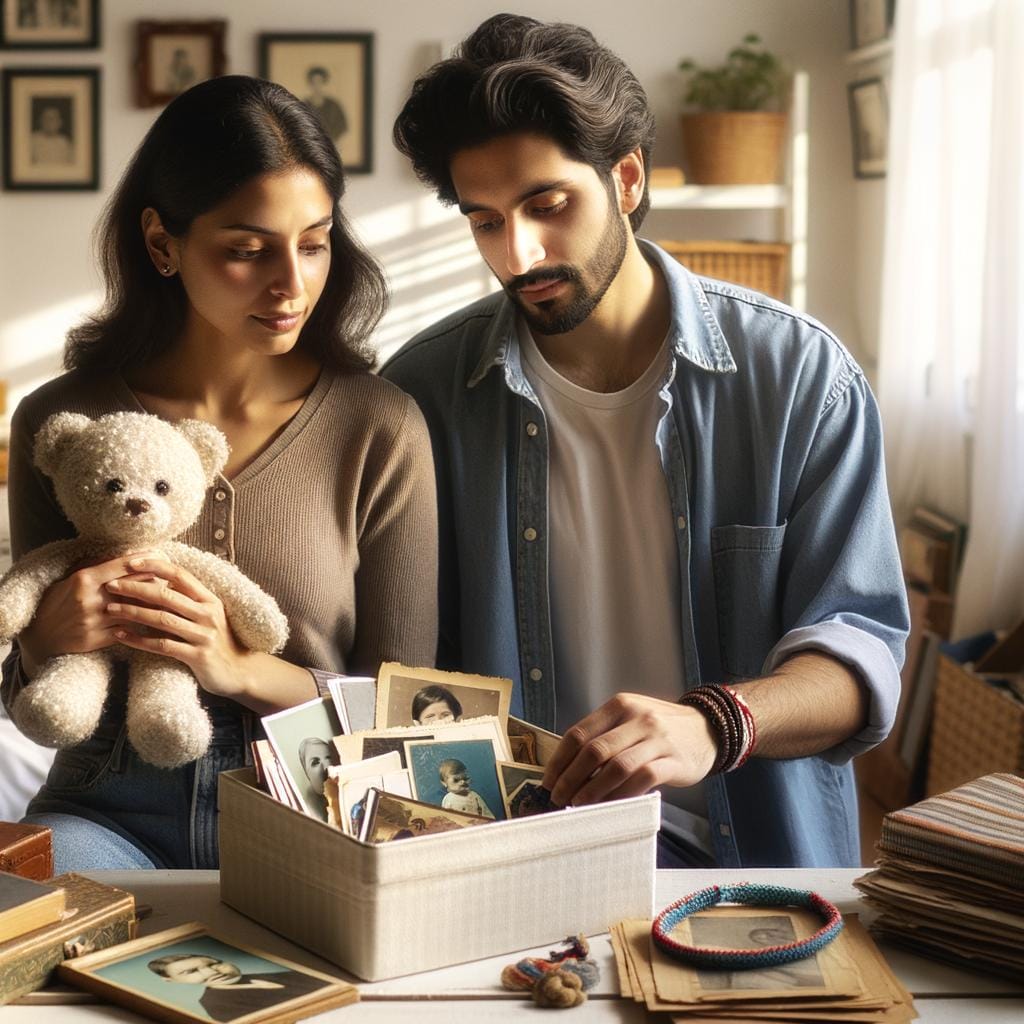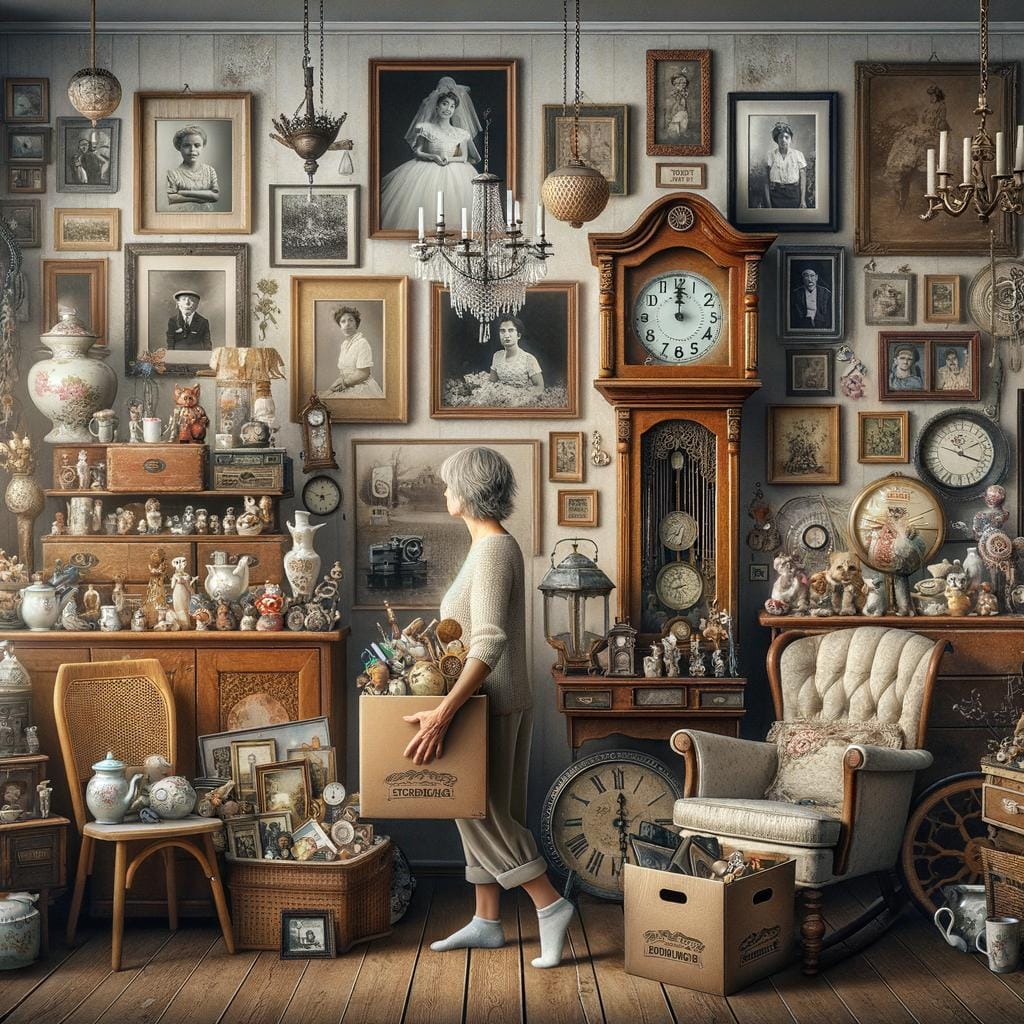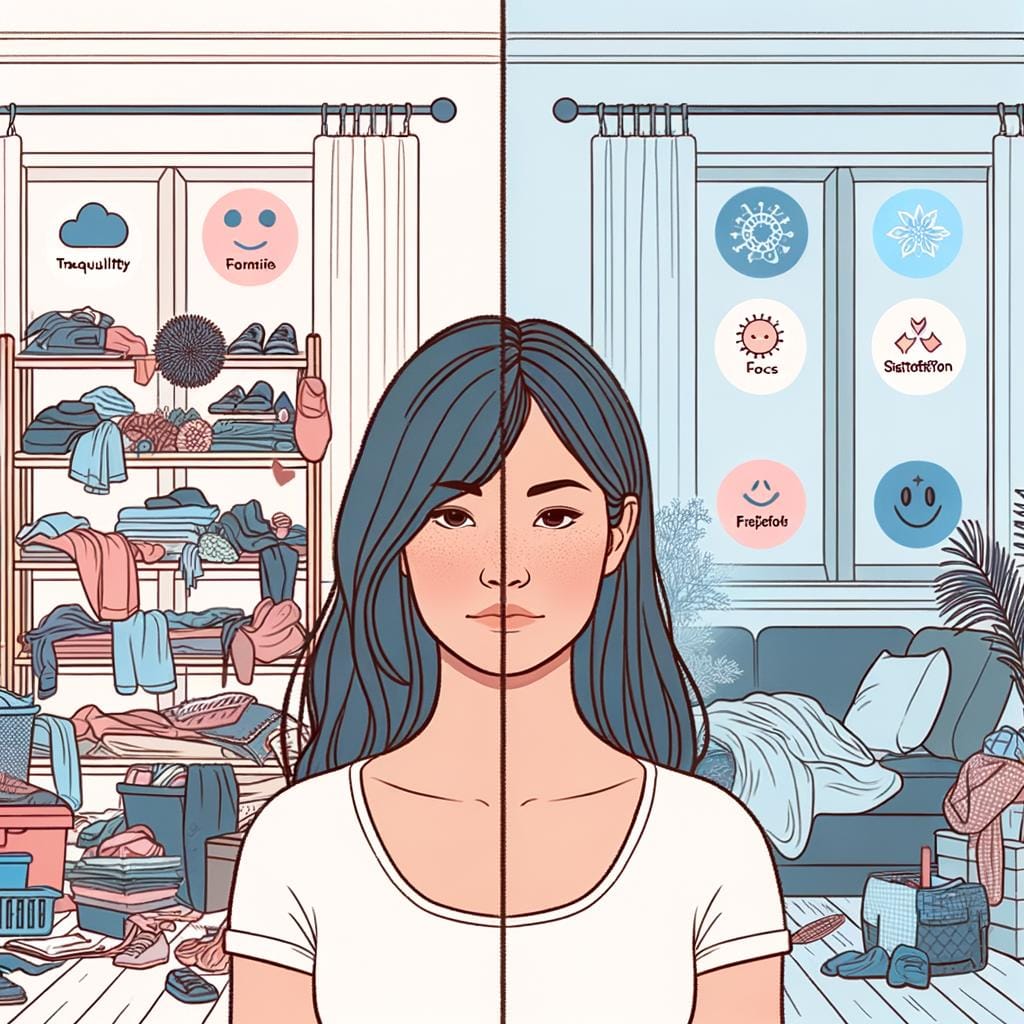Sentimental items hold a special place in our hearts, representing cherished memories and significant moments in our lives. Whether it’s a trinket from a loved one or a token of past achievements, these items carry emotional value that often goes beyond their physical form. In the process of sorting sentimental items, we not only declutter our surroundings but also embark on a journey of emotional healing and self-discovery.
When faced with the task of sorting sentimental items, it’s essential to approach it with a positive mindset and create an environment that fosters reflection and decision-making. By acknowledging the emotional significance of these items, we can better understand their role in our lives and begin the process of letting go or preserving them in a meaningful way. This process not only helps in decluttering our physical spaces but also allows for inner peace and emotional growth.
In this article, we will delve into the benefits of sorting sentimental items, from decluttering our living spaces to finding closure and healing from past experiences. We will explore practical tips on how to get started with sorting, providing a step-by-step guide to help you navigate through the decision-making process.
Additionally, we will discuss strategies for dealing with emotional attachments and maintaining balance throughout the sorting journey. Let’s embark on this transformative experience together as we uncover the power of embracing the mementos that truly matter.
The Benefits of Sorting Sentimental Items
Sorting sentimental items can be a deeply rewarding process, offering both tangible benefits in terms of decluttering physical space and emotional healing. As individuals accumulate sentimental items over the years, it is common for these objects to hold a significant emotional value that can sometimes become overwhelming. By taking the time to sort through these items, individuals not only free up physical space but also create room for emotional growth and healing.
Decluttering for Mental Clarity
One of the key benefits of sorting sentimental items is the opportunity it provides for decluttering both physical and mental space. Physical clutter has been linked to increased stress levels and decreased productivity, making it important to periodically assess and clear out unnecessary items.
Emotionally, holding onto objects that no longer serve a positive purpose can weigh on an individual’s mind, creating mental clutter that hinders personal growth. By sorting sentimental items, individuals can free themselves from this burden and create a more organized living environment.
Emotional Healing Through Reflection
In addition to decluttering physical and mental space, sorting sentimental items can also facilitate emotional healing through reflection and introspection. As individuals go through their sentimental belongings, they have the opportunity to revisit cherished memories, process past experiences, and acknowledge feelings associated with each item.
This process can be cathartic and empowering, allowing individuals to confront their emotions in a safe and controlled manner. By honoring the past while letting go of what no longer serves them positively, individuals can achieve emotional healing and cultivate a greater sense of well-being.
Getting Started
Understanding the emotional value of sentimental items is a crucial first step in the process of sorting through them. These items often hold memories and emotions that are deeply tied to our past, making it challenging to decide what to keep and what to let go of. Taking the time to acknowledge and appreciate the significance of these items can help create a positive mindset before beginning the sorting process.
To set a positive environment for sorting sentimental items, consider creating a space that is calming and inviting. This could involve playing soothing music, lighting candles, or surrounding yourself with things that bring you joy. Keeping distractions to a minimum and focusing on the task at hand can also help you approach the process with a clear mind and open heart.
When starting the sorting process, it may be helpful to create a plan or set goals for yourself. You can make a list of specific items you want to tackle each day or dedicate certain blocks of time to this task. By breaking down the process into smaller steps, you can prevent feeling overwhelmed and stay motivated throughout the sorting journey.
- Acknowledge your feelings towards each item
- Create a supportive and comforting environment
- Set achievable goals for sorting sessions
- Start by choosing a specific category of sentimental items to focus on
- Determine if you want to keep, donate, or discard each item
- Use visual aids like photos or memory boxes to preserve memories without keeping physical items
By approaching the task of sorting sentimental items with a positive mindset and setting up an environment conducive to reflection and decision-making, you can navigate this process with greater ease and emotional clarity. Remember that it’s okay to take breaks when needed and seek support from loved ones if emotions become overwhelming. Ultimately, this journey of sorting through sentimental items can lead to decluttering your space while also honoring cherished memories in a meaningful way.
Step-by-Step Guide to Sorting Sentimental Items
When it comes to sorting sentimental items, having a structured approach can make the process more manageable and less overwhelming. One effective way to begin is by setting aside dedicated time and creating a positive environment for the task.
Clearing a clutter-free space with minimal distractions can help focus your energy and emotions on the items at hand. It’s important to remember that this process is not just about decluttering physical spaces but also about healing emotional wounds and embracing memories.
To start sorting sentimental items, you can adopt a methodology that suits your preferences and needs. Some people find it helpful to categorize items based on themes or significance, while others prefer to sort them chronologically or by individual relationships. Whichever method you choose, try to be consistent throughout the process to maintain a sense of organization and clarity. Additionally, consider using tools such as labels, storage containers, or digital cataloging systems to keep track of your progress.
As you go through each item, take the time to engage with your emotions and memories connected to them. Reflect on why each item holds sentimental value for you and how it has shaped your life story.
When making decisions about what to keep, donate, or discard, listen to your intuition and trust your feelings. Remember that letting go of physical objects does not diminish the importance of the memories attached to them; instead, it can create space for new experiences and connections in your life.
| Key Points | Details |
|---|---|
| Emotional Engagement | Reflect on emotional attachments while sorting sentimental items. |
| Methodology | Choose a sorting method that works best for you: by theme, significance, chronologically, or relationships. |
| Decision-Making | Trust your intuition when deciding which items to keep or let go during the sorting process. |
Taking care of yourself emotionally throughout this journey is vital. By being mindful of self-care practices such as taking breaks when needed, seeking support from loved ones, or practicing relaxation techniques like deep breathing or meditation, you can maintain emotional balance during this often emotionally charged process of sorting sentimental items. Remember that the goal is not only decluttering physical spaces but also honoring the memories and emotions tied to these precious belongings.
Dealing With Emotional Attachments
Another technique for dealing with emotional attachments is to create a designated space for honoring those sentimental items that you choose not to keep. Whether it’s a memory box, scrapbook, or digital photo album, having a special place to store mementos can help ease the emotional burden of letting go. This allows you to appreciate the memories without necessarily holding onto physical objects that may be cluttering your space.
Moreover, involving loved ones in the sorting process can provide emotional support and valuable insights into the significance of certain items. Sharing stories and reminiscing together can make the process more meaningful and help you gain perspective on what truly matters. Remember that parting with physical possessions does not diminish the memories or emotions attached to them – it simply makes room for new experiences and connections in your life.
| Dealing With Emotional Attachments | Tips and Techniques for Letting Go |
|---|---|
| Prioritize items based on joy and purpose | Create a designated space for honoring unsaved mementos |
| Involve loved ones in the sorting process | Share stories and reminiscing together |
Organizing and Storing
Memory Lane Displays
One creative solution for organizing and storing sentimental items is to create a “memory lane” display. This can be a designated area in your home where you showcase special mementos and keepsakes in an aesthetically pleasing way.
Consider using shadow boxes, floating shelves, or gallery walls to arrange photographs, letters, trinkets, and other sentimental items. By curating these displays, you can not only preserve the memories but also turn them into decorative accents that add a personal touch to your living space.
Digitization and Collage Projects
In today’s digital age, another innovative way to organize and store sentimental items is by digitizing them. Scan old photographs, letters, ticket stubs, or other physical mementos to create digital copies that can be easily stored on your computer or cloud storage.
You can also use these digital images to create collage projects such as photo books, scrapbooks, or digital slideshows. Not only does this help preserve the original items, but it also allows you to share these memories with others in a more interactive format.
Sentimental Storage Solutions
When it comes to physically storing sentimental items that may not be suitable for display or digitization, consider investing in specialized storage solutions. Use acid-free boxes or containers to protect delicate items like textiles or heirlooms from damage due to light exposure or environmental factors.
Label each container with a brief description of its contents to make it easier to locate specific items when needed. By choosing the right storage solutions, you can ensure that your precious mementos are safely preserved for years to come while keeping your space clutter-free and organized.
By implementing these creative solutions for organizing and storing sentimental items, you can not only declutter your living space but also honor the memories attached to each item in a thoughtful way. Whether through creating memory displays, digitizing mementos, or utilizing specialized storage solutions, finding unique ways to preserve these treasures allows you to continue cherishing the past while making room for new experiences in the present.
Repurposing Sentimental Items
Sentimental items hold a special place in our hearts, reminding us of precious memories and significant moments in our lives. While these mementos can accumulate over time, causing clutter and overwhelm, there are creative ways to repurpose them into functional pieces that not only preserve the memories but also serve a purpose in our daily lives. Repurposing sentimental items is a meaningful way to breathe new life into these treasures while decluttering our spaces.
Here are some ideas for repurposing sentimental items:
- Transforming old photos into artwork: Instead of storing away old photographs in albums, consider framing them or creating a photo collage to display on your walls. This not only adds a personalized touch to your home decor but also allows you to enjoy these cherished memories every day.
- Upcycling heirloom jewelry: If you have inherited jewelry that no longer suits your style, consider repurposing it into new pieces that you can wear regularly. For example, you could turn an old brooch into a pendant for a necklace or repurpose gemstones from an old ring into earrings or bracelets.
- Creating memory quilts or pillows: Turn sentimental clothing items such as baby clothes, wedding gowns, or t-shirts into unique quilts or throw pillows. Not only will this give these items new life, but they will also become cozy reminders of special moments whenever you use them.
By repurposing sentimental items into functional pieces that we can interact with daily, we not only honor the memories associated with them but also integrate them seamlessly into our lives. These repurposed treasures become conversation starters, unique decor elements, and practical objects that continue to bring joy and nostalgia for years to come. Embracing the process of transforming sentimental items into something new allows us to appreciate their significance in a different light.
Maintaining Emotional Balance
When sorting sentimental items, it is common to experience emotional overload as memories and attachments resurface. It is important to prioritize your emotional well-being during this process by incorporating self-care practices. Taking care of yourself while decluttering and sorting through mementos can make the experience more manageable and even therapeutic.
One key self-care practice for maintaining emotional balance during sorting sentimental items is setting boundaries. This involves establishing limits on how much time you spend on this task each day, as well as creating a support system to lean on when feelings become overwhelming. Seeking guidance from loved ones or a professional counselor can provide the necessary emotional support needed during this challenging process.
Another important self-care practice is practicing mindfulness. Staying present in the moment and acknowledging your emotions without judgment can help you navigate difficult feelings that may arise. Mindfulness techniques such as deep breathing exercises, meditation, or journaling can aid in processing emotions and promoting a sense of calmness while sorting sentimental items. Remember, it is okay to take breaks when needed and not push yourself too hard emotionally.
Conclusion
In conclusion, sorting sentimental items can be a deeply emotional and cathartic process, but one that ultimately leads to decluttering our physical space and healing emotions. The journey of going through mementos from the past allows us to reflect on the memories attached to each item, understand their significance in our lives, and make conscious decisions about what truly matters to us.
By taking the time to sort through sentimental items, we not only create more organized living spaces but also pave the way for emotional growth and healing.
Throughout the process of sorting sentimental items, it is important to maintain a positive mindset and create a supportive environment that fosters self-care. Whether it involves setting aside dedicated time for sorting or seeking support from loved ones, ensuring emotional balance during this journey is essential in dealing with any overwhelming feelings that may arise.
Embracing self-care practices such as mindfulness, journaling, or seeking professional help if needed can aid in navigating through the emotional rollercoaster that comes with revisiting memories.
Ultimately, as we organize and store our sentimental items in creative ways or even repurpose them into functional pieces, we are not only preserving physical tokens of our past but also honoring the memories they hold. By letting go of items that no longer serve us emotionally and cherishing those that bring joy and meaning into our lives, we create spaces filled with mementos that truly matter.
The journey of sorting sentimental items is not just about decluttering; it is about embracing the past, finding closure where needed, and moving forward with a greater sense of clarity and emotional well-being.
Frequently Asked Questions
What to Do With Sentimental Items When Decluttering?
When decluttering sentimental items, it’s important to approach the process with care and mindfulness. First, consider if the item truly holds value or if it is simply taking up space.
If the item brings you joy or holds significant meaning, find a way to honor it without keeping the physical object. This may involve taking a photo of the item, creating a memory book, or passing it along to another family member who may appreciate it more.
How Do You Organize Keepsakes?
Organizing keepsakes involves finding a balance between displaying these items and keeping them safe. One approach is to create designated spaces for keepsakes, such as shadow boxes or decorative containers.
It’s important to regularly revisit your collection of keepsakes and assess if they still hold the same sentimental value. Keeping them organized in a way that allows you to easily access and enjoy them can enhance their significance.
Is It OK to Get Rid of Sentimental Items?
It is okay to get rid of sentimental items if they no longer serve a purpose or bring positive feelings. The key is to reflect on why you are holding onto the item and whether keeping it aligns with your values and goals.
If an item only triggers negative emotions or is causing clutter in your space, letting go of it can be a healthy decision. Remember that memories are not tied to physical objects and that letting go can free up mental and physical space for new experiences and memories.

Hello, I’m April Denton, your go-to expert for all things home decluttering and organization. With over a decade of experience helping individuals transform their living spaces into serene, clutter-free sanctuaries, I am passionate about the life-changing benefits of decluttering. My journey into the world of organization began out of necessity, juggling a busy career and a bustling household. I quickly realized that a well-organized home was the key to a more balanced, stress-free life.





